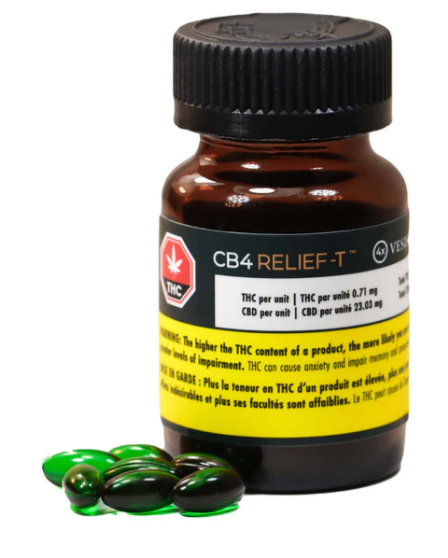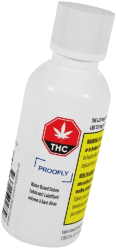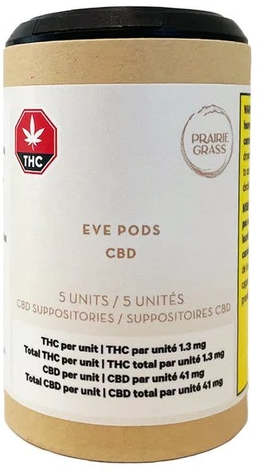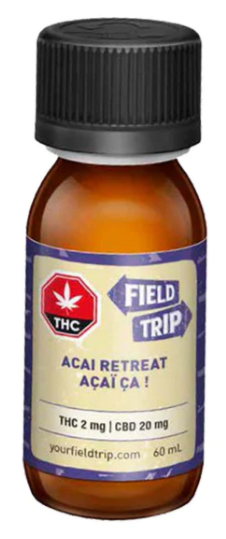Since 2018, discussions surrounding Delta 8 have increased across North America. Delta-8 is like Delta-9 THC, but with a slight high, making it beneficial for those sensitive to THC. The difference between the two is the molecule, the location of a double bond between a carbon atom.
Consumer reports reveal they still have the same beneficial effects of relaxation and pain relief. Cancer research with pediatric patients has demonstrated complete prevention of vomiting after chemo treatment.
When you hear about THC, it refers to Delta-9 and not Delta-8. They should not be confused with each other.
What do we know about Delta-8?
Regulated Delta-8 products are already available on the market. You'll find it mostly in drinks, gummies, and vape cartridges.
Due to Health Canada's lack of research and policies regarding this cannabinoid, many companies choose not to transport products until more precise Health Canada guidelines exist. At present, there are no restrictions or guidelines on dosage limits. Legal products with Delta-8 in Canada have been approved for publication by Health Canada with full disclosure of delta-8 content upon product acceptance.
There have been fears and controversies surrounding him recently due to the higher number of emergency department admissions in the United States. It has recently been thought that this has more to do with the methods that unregulated or illegal operators have used to produce Delta-8 products than the cannabinoid itself. Many states do not have legal oversight of cannabis or regulate CBD-derived products and do not have guidelines on the safe handling and production of cannabis or CBD-derived products.
In 2018, the Farm Bill in the United States legalized the sale of hemp containing less than 0.3% THC. Delta-8, because it is not THC and is synthesized from CBD, slips through this loophole and allows the sale of this cannabinoid. Delta-8 is not naturally present in the hemp plant and is synthetically manufactured, and always provides a euphoric effect. They use CBD HEMP to convert it into Delta-8. While Delta-8 can be safely synthesized, the problem is that unregulated and illegal producers in the United States use methods, additives, and processes that result in dangerous cannabis products that include Delta-8.
What is Canada doing differently?
Our regulations in Canada are strict, and we fully legalized THC and CBD. We do not have to hide and cannot use aggressive metals or synthetic acids, per the Cannabis Act. There are several options, many of which are safe to produce this cannabinoid, such as solvent-free extraction (ice water) and solvents.
Equipment used to manufacture Delta-8 safely; costs licensed producers thousands of dollars. The process involves CBD isolate, solvents, heat, laboratory equipment and adequate ventilation. Most importantly, someone who understands all the science behind the plant, equipment, and process. Believe it or not, although Delta-8 is a synthetic process, it goes through similar steps and uses almost the same equipment as THC and CBD extractions. Health Canada approves products containing delta-8, thoroughly tested to the same standards as other legal products and safe to consume.
What can he do for Me?
Research surrounding the therapeutic benefits of Delta-8 is scarce. Consumers report that they have experienced the same symptom relief as THC. They felt relaxed, decreased pain, and had far fewer adverse responses. For those who don't want a pronounced "high," Delta-8 may be a better option. But, like any cannabinoid, there is always a risk since everyone's body reacts differently to cannabis. It is best to take smaller doses when starting a new product.
The biggest concern right now with this cannabinoid is dosing the limits and "how much is too much?" Like any other cannabinoid product, starting with a low dose is best and waiting to see your effects. Plant medicine can be unpredictable for every human body. We all react differently and should not consume large amounts of cannabinoids simultaneously. Health Canada will notify consumers and take appropriate action in the event of an increase in adverse reaction reports.











 About Abba Medix
About Abba Medix





